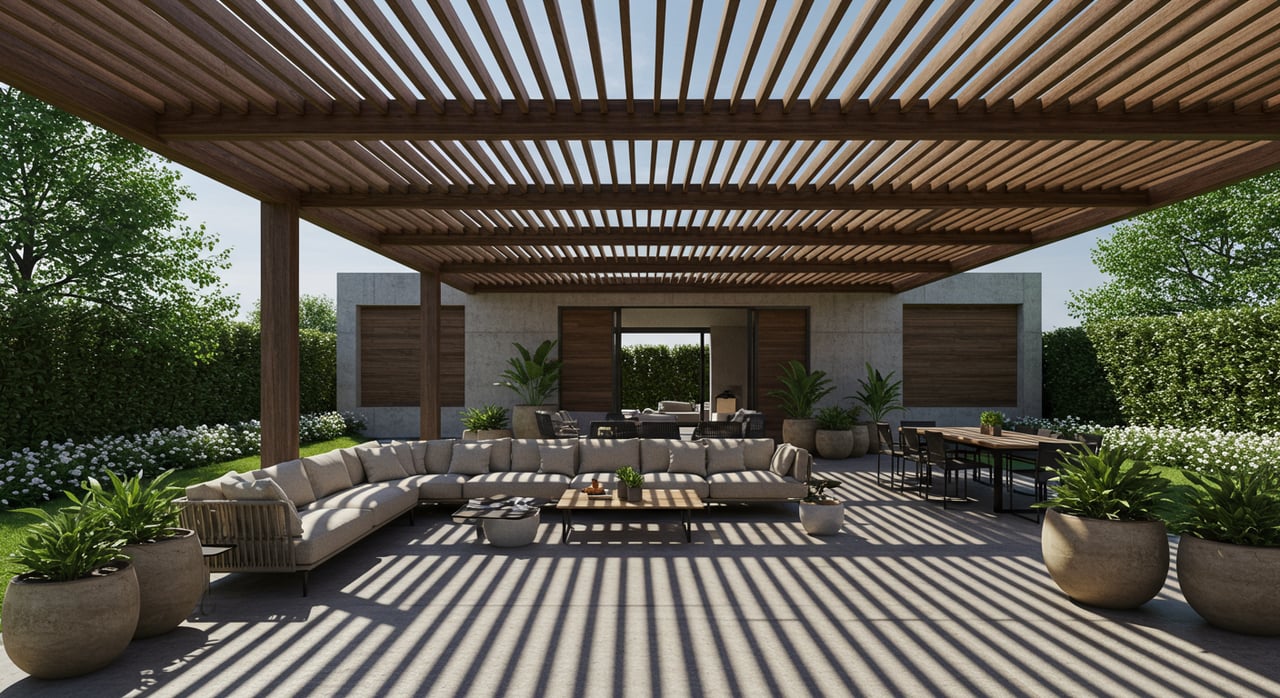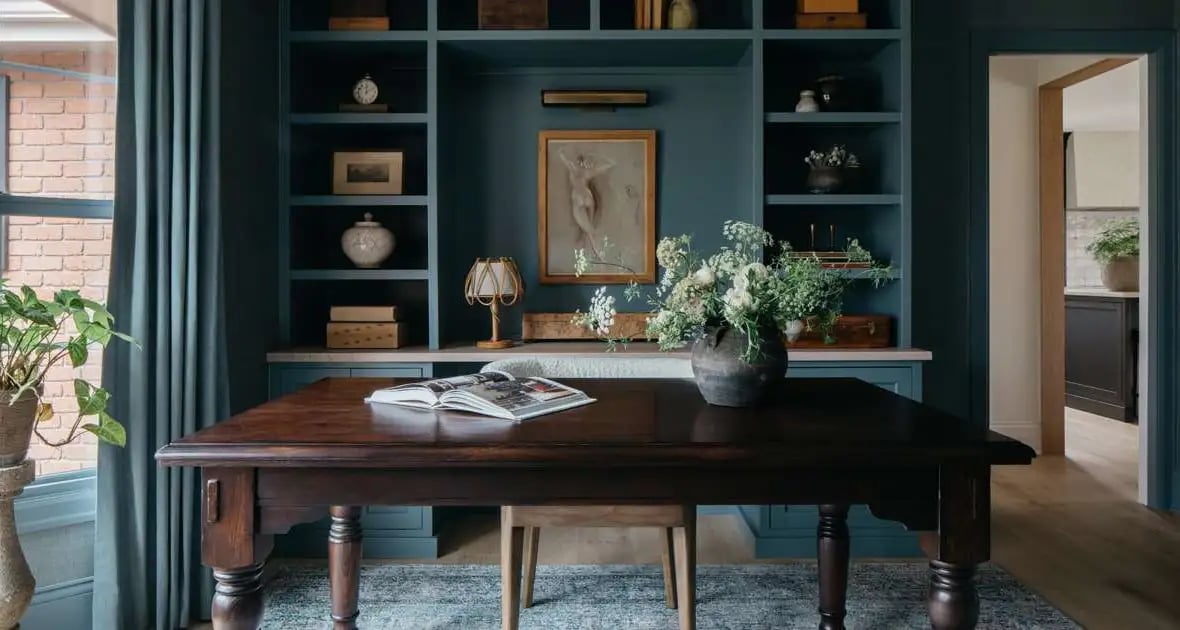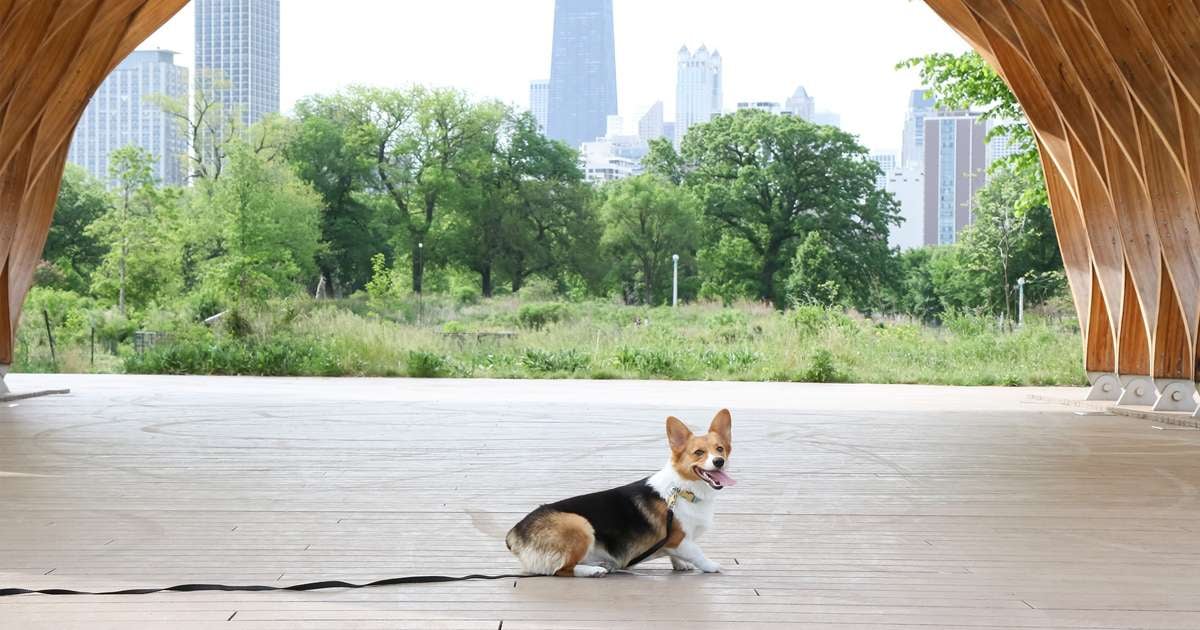While sustainable design may have once been considered a fleeting fad, it’s become clear in recent years that this decorating ethos is here to stay. This practice has gained momentum as more homeowners seek to reduce their carbon footprint and lower their energy bills.
We’ve rounded up six of our favorite eco-friendly interior design trends that are shaping the future of residential real estate.
1. Earth Tones Steal the Show

Image credit: havenly.com
Step out of the spotlight, grey! Warmer, earthy hues are taking center stage. From terracotta to olive green, interior designers are embracing rich tones inspired by nature to create cozy and inviting spaces that feel more connected to the outdoors. Consider a pop of earthy tones or go big and bold with a tone-on-tone look that layers the same hues within a single space — think walls, trim, furniture, and fabrics, all in a single shade.
2. Embracing Natural Textures and Fabrics
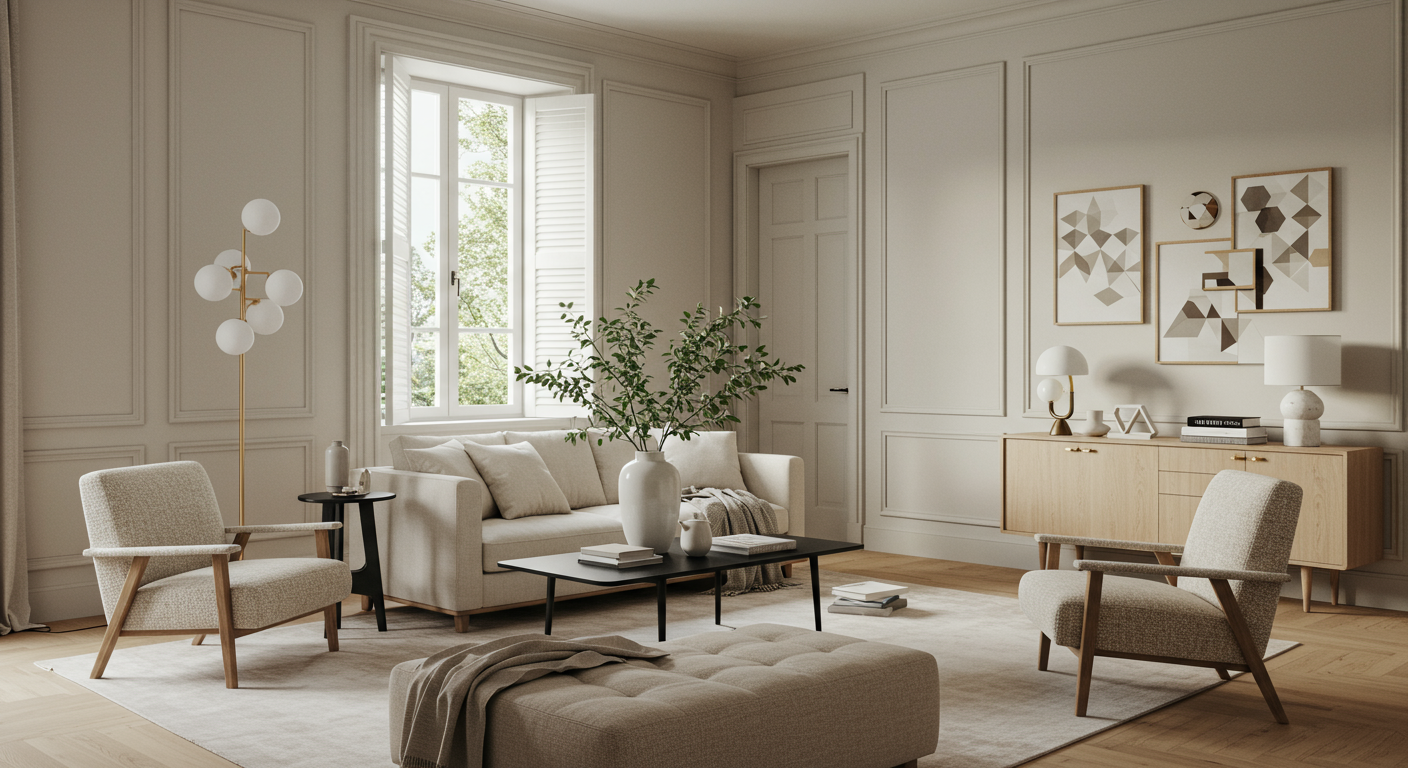
Image credit: homesandgardens.com
On-trend homeowners are using natural textures and fabrics to elevate their interiors and add warmth, depth, and visual interest to every room. Renewable materials like organic cotton, wool, jute, and linen are durable and more sustainable, making them ideal choices for rugs, upholstery, and bedding – and they’re versatile enough to effortlessly blend with any style or color palette.
And these materials are just the beginning – think natural stone, renewable wood, recycled glass, cork and more. These and other natural materials help minimize environmental impact without sacrificing style and comfort.
3. Embracing the Power of Plants
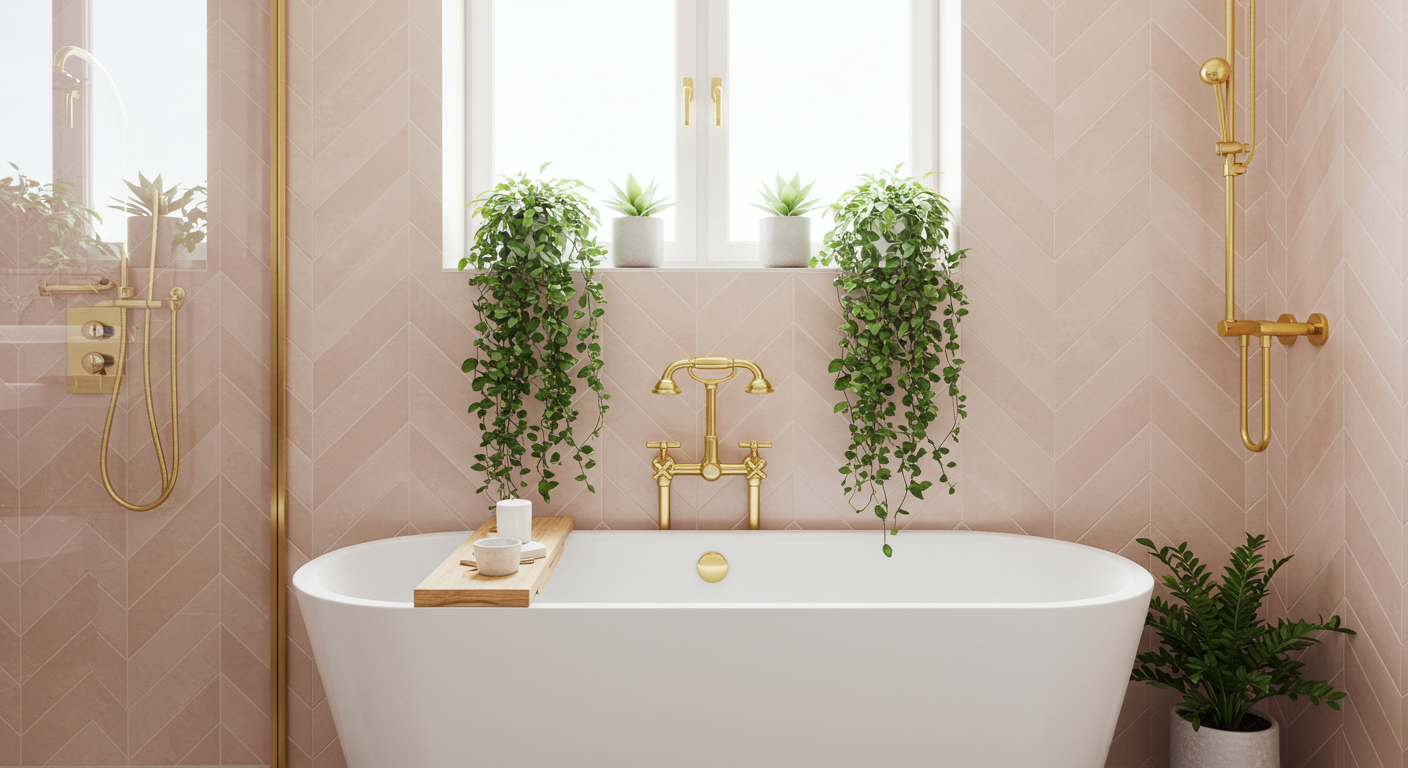
Image credit: Decormatters.com
Biophilic design has been a buzzword in interior design for the past few years. Hop on this trend and bring the outdoors in with lush indoor plants and living green walls.
Not only are these green additions beautiful, but they can improve indoor air quality by absorbing toxins and releasing oxygen. Another plus? Exposure to natural elements like plants can significantly reduce stress and boost your overall well-being. Incorporating biophilic design elements into your home is not just about aesthetics; it’s about creating an environment that positively impacts your health and mood.
4. Upcycling Furniture and Decor
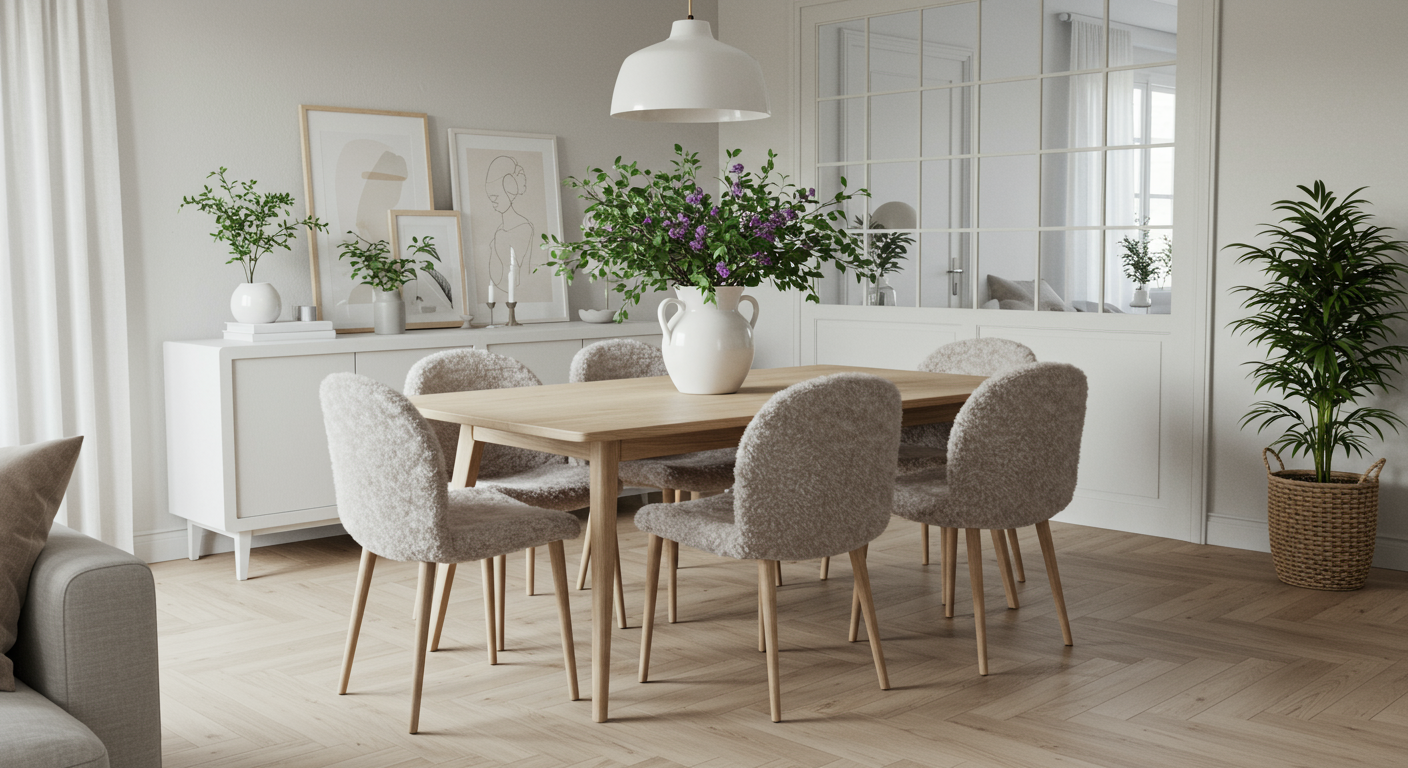
Image credit: idealhome.co.uk
agrees: it’s time to say goodbye to fast furniture that just ends up on the curb. This year is all about upcycling, a sustainable decorating solution that breathes new life into old furniture and decor. Think: repurposing vintage dressers into bathroom vanities; transforming tired, dated cabinets with paint and wallpaper; or even turning baskets into chandeliers.
5. Energy-Efficient Lighting Solutions

Image credit: decorilla.com
Energy-efficient lighting has never been more in the spotlight – or easier to integrate. LED lights, which consume significantly less energy than traditional incandescent bulbs, have become the go-to choice, lauded for their longevity and eco-friendliness. Homeowners are also adding smart lighting systems with motion sensors and programmable features that conserve energy, reduce their carbon footprint, and save money on utility bills.
6. Taking Sustainable Design Outdoors
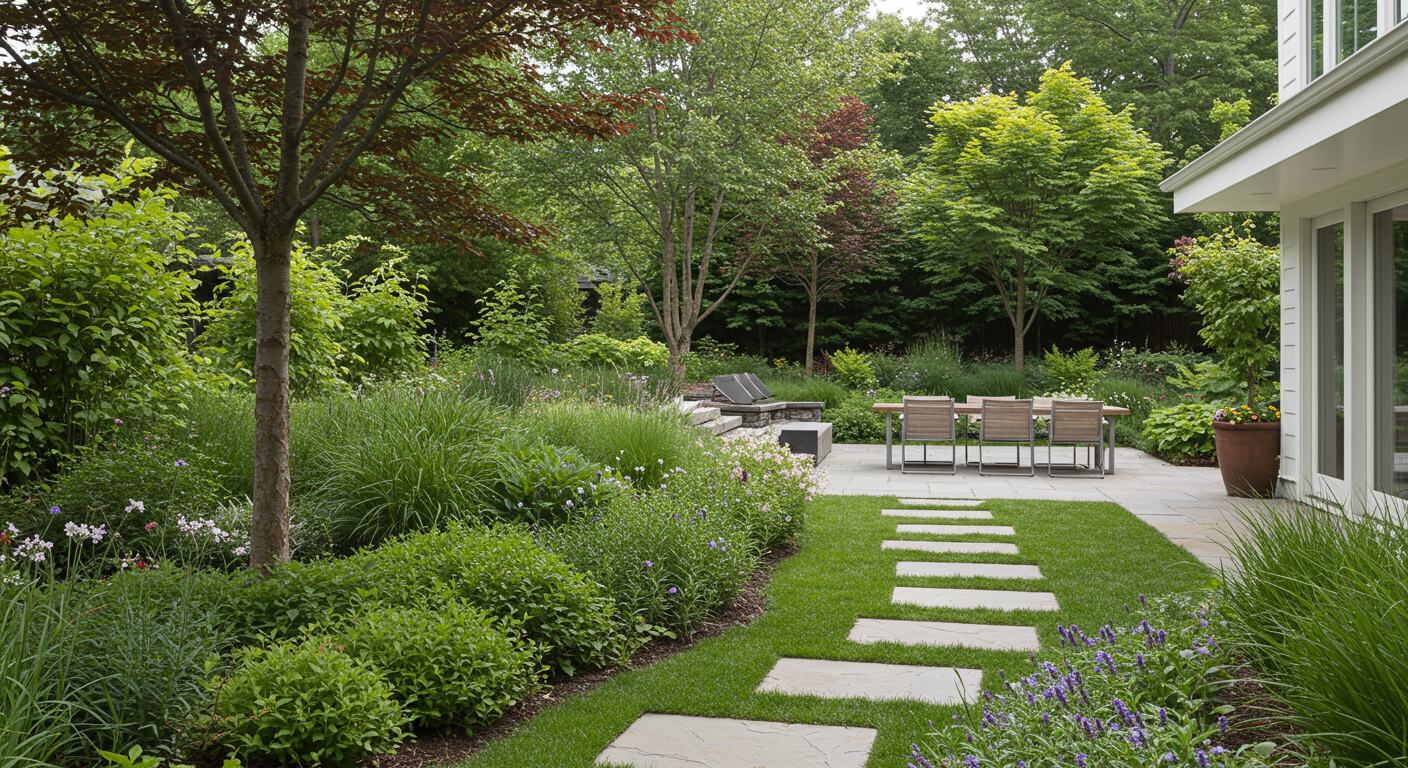
Image credit: thearchitectsdiary.com
Outdoor spaces are getting an eco-friendly makeover with landscaping solutions that conserve resources and create a healthier ecosystem. To jump on this positive trend, opt for native and drought-tolerant plants (this guide can help you find the right plants for your area) that require less water and maintenance while providing food and shelter for local birds, butterflies, and other pollinators.
Also trending: planting deciduous trees – trees that shed their leaves in the winter – to provide shade when the temperature rises while letting sunny rays in during the winter. We’re also seeing homeowners integrate rain gardens in areas of their yards so water pools can absorb and filter rainwater that would otherwise run off and flood storm sewers and local waterways.
By incorporating energy-efficient systems, sustainable materials, natural light and ventilation, smart home technology, and sustainable landscaping, homeowners can reduce their environmental impact and save money on energy costs in the process.
What are your favorite eco-friendly design tips? Comment below!
